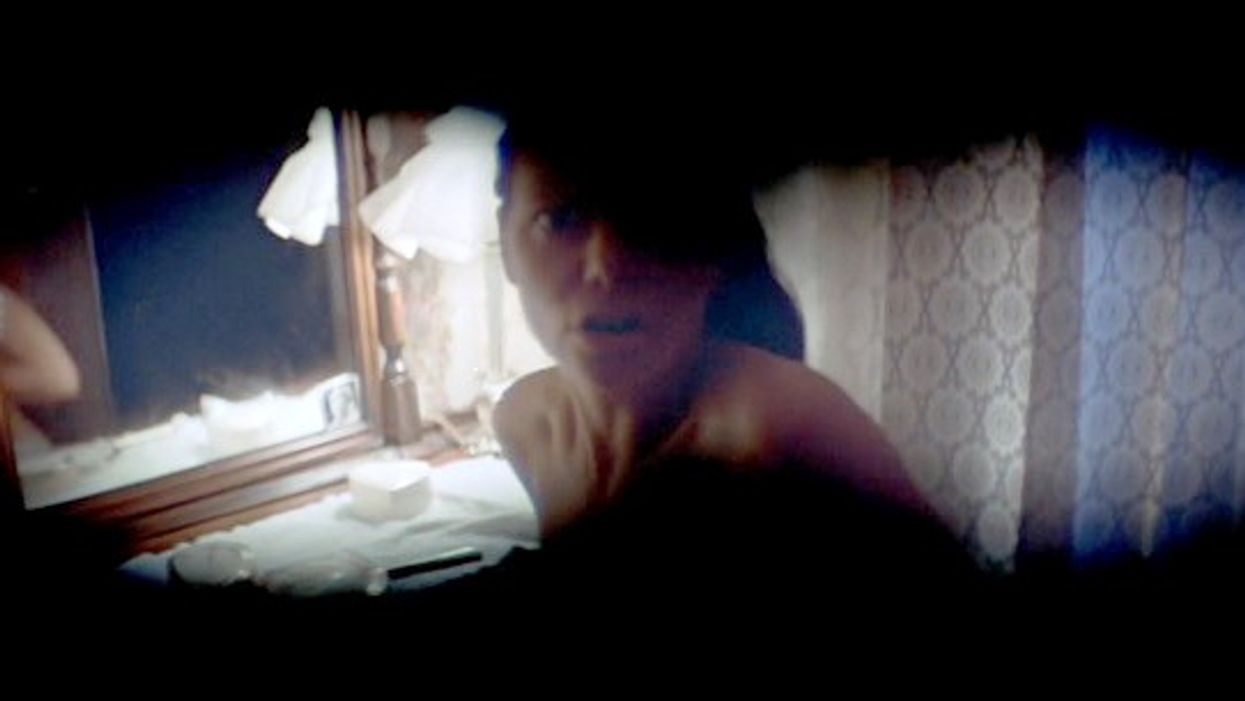Watch: John Carpenter Shows How to Master Point of View
POV is at the essence of storytelling, and John Carpenter is the master.

It could be said that storytelling is all in who tells the story.
The character who guides us through a film shapes everything: the pace at which we learn about the plot events, whether the story puts us in a good mood or a more somber mood, and how we feel when the story ends. John Carpenter, perhaps most famous for horror masterpiece Halloween, often uses point of view to torque a story in one direction or another.
A new video essay by kiNO allows us to take a closer look at Carpenter's use of different vantage points in storytelling.
Take, for instance, a notorious example: the scene in Halloween when Michael Myers murders his family. Carpenter presents that scene, as we see here, from Myers' point of view, from inside the eyeholes of his mask. How does this shape the experience of the scene?
Well, most importantly, it places the viewer in Myers' shoes; we see things as he sees them, and we begin to imagine—frighteningly—that we're following in his footsteps, committing his murderous actions along with him, whether we want to or not. If we were merely watching Myers commit murder after murder, we might be terrified, but we wouldn't feel complicit. That's what causes the goosebumps we have when watching the film.
The impulse to mainline a story directly to viewers' brains is at the heart of most storytelling.
For a more complicated example, take a look at the scene from They Live sampled here, which uses point of view in a slightly more nuanced way. We see Roddy Piper's Nada walking down the street, trying on a pair of sunglasses; viewers are detached from the scene. Then, suddenly, when Nada looks at an innocuous signboard and sees the word "OBEY" where bland advertising copy was before, we're suddenly viewing the story through Nada's eyes. The effect, as with the Halloween clip, is chilling and disorienting. We wonder, Did that really just happen? Carpenter uses this technique to bring his story—in this case, that of an individual who sees a truth (about an alien takeover of Earth) that no one else sees—home to viewers in the most immediate way possible.
In the clip featured from In the Mouth of Madness, Sam Neill's John Trent and Julie Carmen's Linda Styles wander through (quite literally) a book. Their exploration of the disappearance of novelist Sutter Cane turns out to be an exploration of the disappeared person's mind, and because that person is a writer, Carpenter places his characters inside the physical pages of one of the writer's volumes. So whose point of view is at play here? We empathize with Trent and Styles, but the storytelling could be said to be in the hands of Cane. This isn't just a meta-narrative; it's a meta-meta-narrative.
The impulse to mainline a story directly to viewers' brains is at the heart of most storytelling, from novels to ballads to animated cartoons. Filmmakers are uniquely fortunate in being able to use the camera to actively place viewers inside their stories. What are some other tricks you use to make the stories you're telling more immediate? Offer some in the comments!

 No Film School's coverage of
No Film School's coverage of 









